I'm Declaring 2019 the Year of the Frittata—Here's How I Got Here and How You Can Too
Despite the fact that I'm a huge egg lover (as evidenced by this story, this story, and this story), I didn't cook my first frittata until last year. For some reason it intimidated me, but it shouldn't have. Though it seems kind of fancy, a frittata is actually easier to make than an omelet or a quiche, just as tasty as both, and a perfect vessel for all your leftovers and meal prep fixings. Basically, it's the tastiest way to clean out your fridge at the end of the week.
Frittatas aren't just good for using up leftovers, though—they make great leftovers themselves! When you refrigerate cooked eggs, they'll stay good to eat for three to four days, so you can easily make a frittata (or two) during Sunday meal prep, slice and pack it up, and enjoy it for breakfast, lunch, or dinner almost all week long.
In fact, frittatas are so foolproof, you don't even need a recipe to make one. As long as you follow a super simple formula, you can use whatever ingredients you prefer or have on hand. Here, I use my own frittata-making experience—plus tips from an egg-cooking expert and a registered dietitian—to prove that it's totally possible to make a delicious, nutritious, and convenient frittata on your own.
In case you don't know, a frittata is a scrambled egg dish from Italy, and it's a lot like an omelet, quiche, or tortilla español.
Frittatas are simply beaten eggs combined with vegetables, meat, and dairy products, (or whatever fillings you prefer), then cooked in a skillet until firm. Stovetop recipes will have you flip the frittata so that it cooks evenly on both sides. Other recipes will have you start the frittata on the stove and finish it in the oven, which is what I usually opt for in order to avoid the risk that comes with flipping a big, hot egg pancake—if you're klutzy like me, that sh*t gets messy!
It makes a great breakfast, lunch, or dinner because it's usually packed with nutrients like fiber and protein.
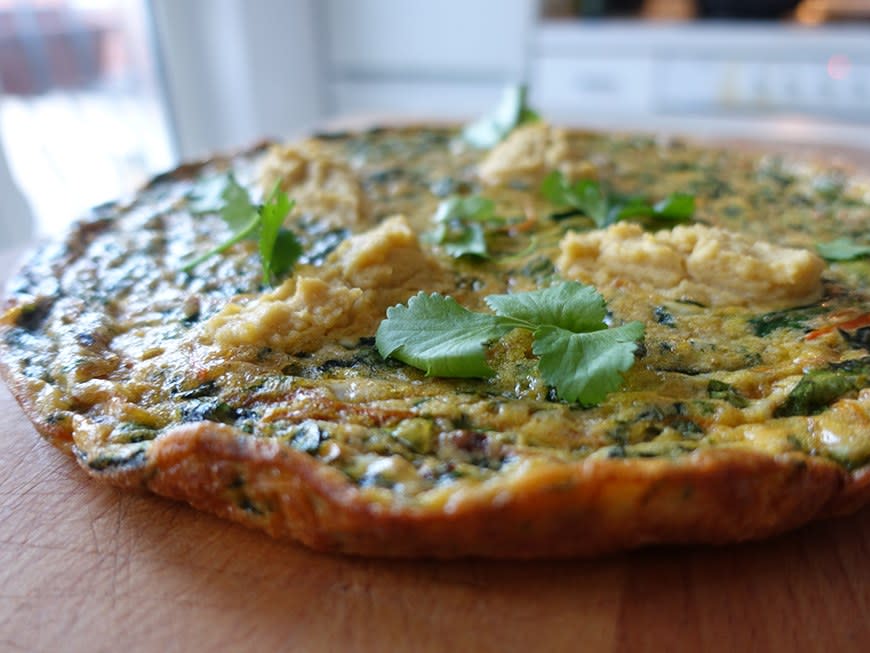
According to Amy Gorin, M.S., R.D.N, owner of Amy Gorin Nutrition in the New York City area, a frittata is a great choice for any meal because it's made of eggs (which are a great source of protein) and it's usually stuffed with fiber-rich veggies.
To make any frittata, always use 6 to 8 eggs and 2 cups of filling.
Before I made my first frittata over a year ago, I spent a while perusing frittata recipes to see what their deal was. What I found is that almost all frittatas contain somewhere between six and eight eggs, and you'll want to use more or less depending on the size of your skillet—a 10- to 12-inch skillet will need eight eggs, and an 8-inch skillet will need six or seven.
As for fillings like veggies and meat, you should always add about two cups total—so, if you're only using veggies, be sure to use two cups. But if you're using meat and veggies, you'll want to do one of each.
You can add spices, herbs, or ingredients like Greek yogurt or cheese in whatever measure you like—these ingredients won't really affect the volume of your frittata, so you don't need to worry about how much you use.
As for fillings, there aren't many ingredients you can't use.
"One of the reasons you find frittatas on so many brunch menus is because they're so forgiving," George Weld, owner of the restaurant Egg in Brooklyn, tells SELF. When it comes to what you add to a frittata, you can really use anything and it will probably turn out great. At the end of the day, it's all about your preference.
Just be sure too avoid adding anything with too much liquid.
"The only things I'd avoid are ingredients that add a lot of liquid," says Weld. Too much liquid will prevent your frittata from setting and, in some cases, make it kind of watery. For that reason, he warns against adding milk, and he recommends draining any vegetables that create a lot of water. If you're using a fresh tomato, chop it and drain the juice before you add it to your eggs. And if you want to use spinach or another watery, leafy green, opt for the frozen version because it's easier to squeeze the liquid out of and it's ready to go with a quick round in the microwave.
And cook all your fillings before you combine them with the eggs.
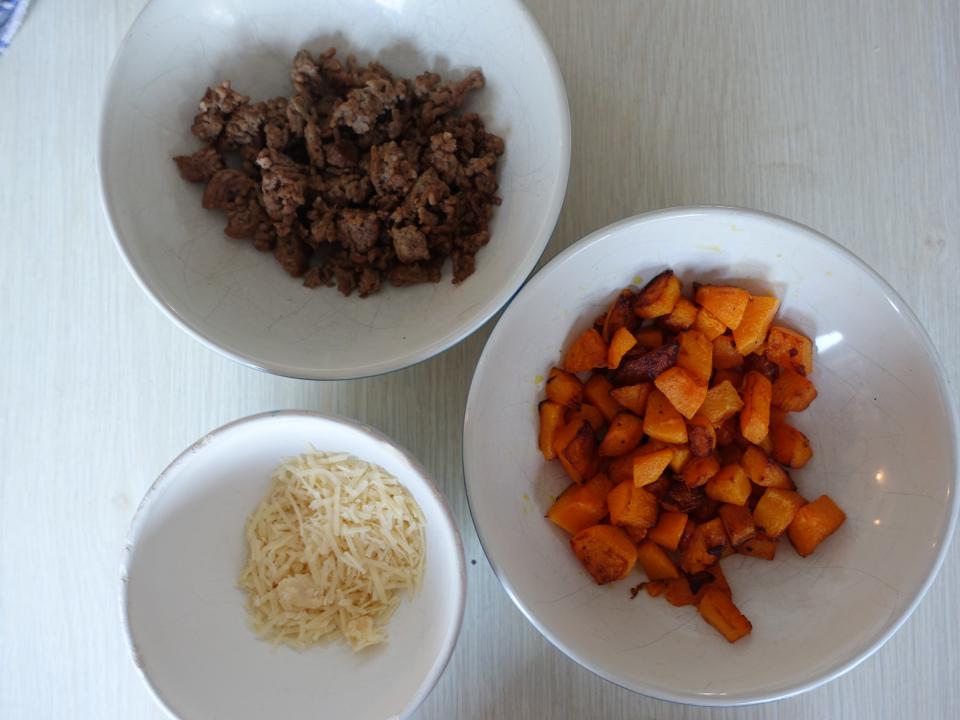
Gorin says that while you can fill your frittata with just about anything you like, you'll have to think about whether or not the ingredient needs to be cooked before you add it to your eggs. With meaty ingredients like sausage or bacon, you'll want to cook them before because otherwise they'll release a lot of liquid as they cook. Plus, doing that guarantees they'll be fully cooked and safe to eat, whereas they might not be if you cooked them directly into the frittata. "The beauty of a frittata," she says, "is that you can use many leftover ingredients, such as already-cooked potatoes."
And be sure to use a nonstick skillet.
Even if you don't intend on flipping your frittata, using a nonstick skillet will make it so much easier to get it out of the pan when it's finished. If your skillet isn't nonstick, the whole thing might fall apart when you try to remove it.
I used these simple rules to make three different frittatas without a recipe.
For this story, I used the formula and a bit of creativity to make one vegetarian, one dairy-free, and one meat frittata, and I was honestly shocked by how good they turned out.
Start by cooking and prepping any ingredients you need to.
The first free-form frittata I tried was a dairy-free, Mediterranean-inspired combo of 1/2 cup spiced carrots, 1/2 cup spinach, cilantro, mint, and hummus. I started by grating the carrots and sautéeing them with cumin and paprika for a couple minutes until they became tender. Then, I microwaved the frozen spinach, drained the excess liquid, and chopped my herbs.
For the second recipe, a ground pork, squash, and Parmesan number, I had to prepare the pork and the squash before I started the actual frittata. I cooked the pork until it was fully ready, then I drained any liquid or grease that came off of it. After that, I chopped the squash into cubes and sautéed it with a bit of oil until it was fork-tender. With ingredients like squash or potatoes, you always, always, always have to cook them before you add them to a frittata.
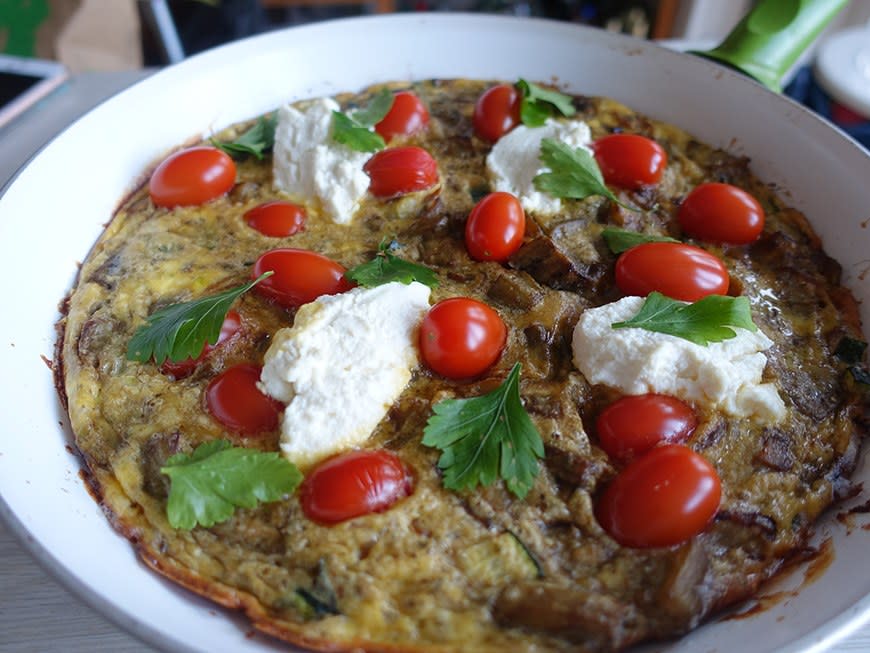
My final frittata, a French-style mix of eggplant, zucchini, tomatoes, ricotta, oregano, and thyme, I cooked the eggplant and the zucchini before starting the frittata, but I decided to add fresh tomatoes. In this situation, I topped the frittata with the tomatoes just before I put it in the oven—that way, I'd get a beautiful cherry tomato-topped frittata, without having to worry about the tomato juice ruining the integrity of the dish.
After you've cooked your ingredients, scramble the eggs thoroughly. Then, whisk in your creamy ingredients. Wait till the very end to add your heavier items.
Using a whisk or a fork, scramble your eggs in a large bowl until they're fully combined, then continue to whisk in any creamy ingredients you might be using. In my dairy-free recipe I whisked hummus directly into the eggs to give them a creamier texture. I did the same with the ricotta in the French-style frittata, and the Parmesan in the pork and squash recipe.
Heat a skillet over a medium, coat it with a tablespoon of oil, and add your frittata mixture.
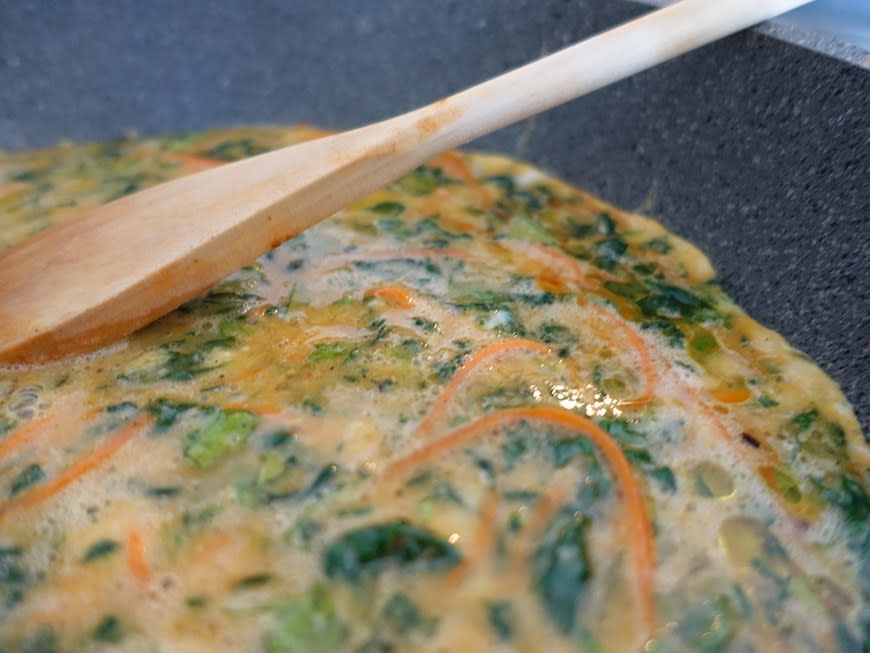
Swirl the mixture around so that it coats the entire bottom of the skillet, then let it cook until it sets, about five minutes. You'll know it's set when you the edges start to firm up, like they have in the above photo.
After the edges set, transfer the frittata to the oven to finish cooking.
For my dairy-free recipe and my French-style recipe, I simply transferred them to the oven to finish cooking, which took about 10 to 12 minutes at 375 degrees. If you choose this method, know that frittata will be ready when the eggs are puffing up and slightly brown.
Or, flip it!
If you like to live on the wild side, flipping a frittata may be just the activity you were looking for! You only need to flip a frittata if you don't feel like cooking it in an oven, and I used the method for my squash and pork recipe just to try it out.
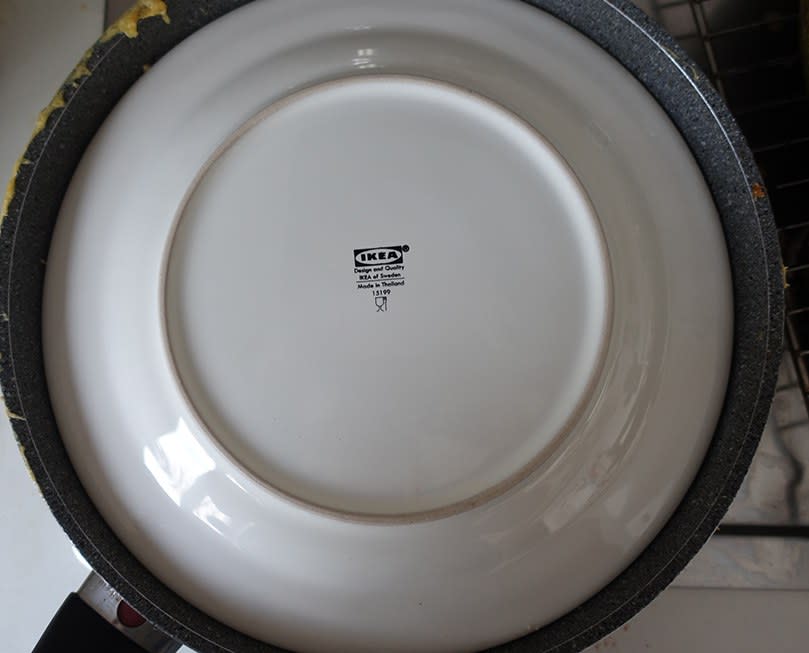
To do it, place a plate on top of the frittata while it's still in the pan. With one hand on the plate and another on the handle of the skillet, quickly flip that frittata! Don't hesitate—once you've decided to flip, just keep going, otherwise you might have a mess on your hands. Then, slide the raw side of the frittata back into the skillet to finish cooking. If you're not sure what I'm talking about, watch the video below.
And that's all you need to know to make a frittata on your own! When it's done cooking, transfer it to a plate, or cut it up into slices and store it up for later. Before you know it, your life is going to have a lotta frittatas.

